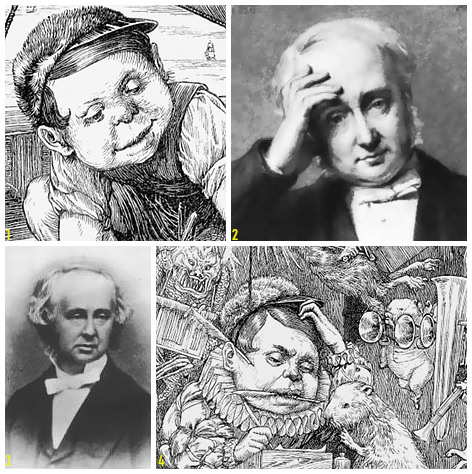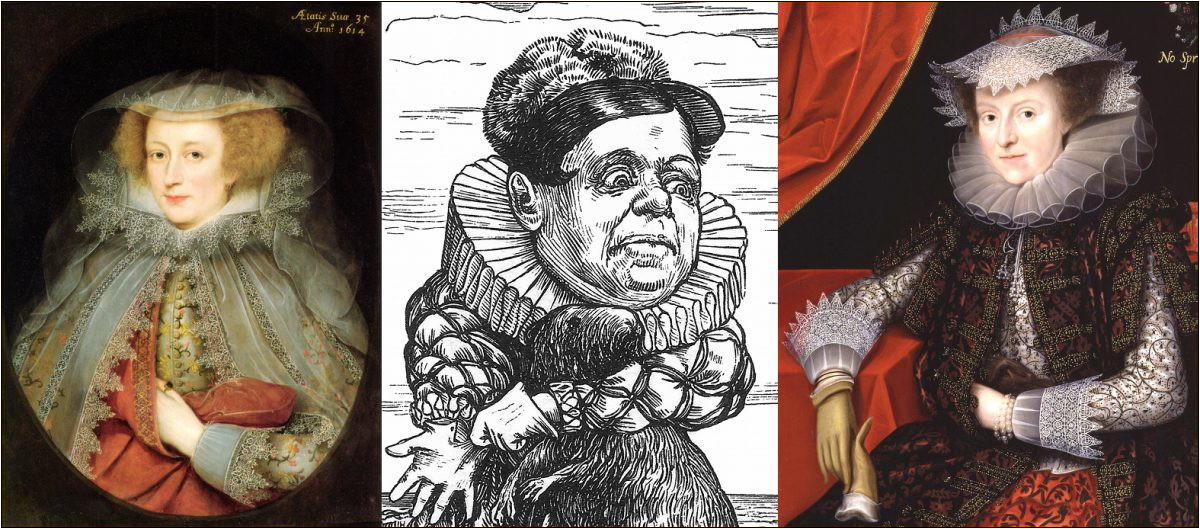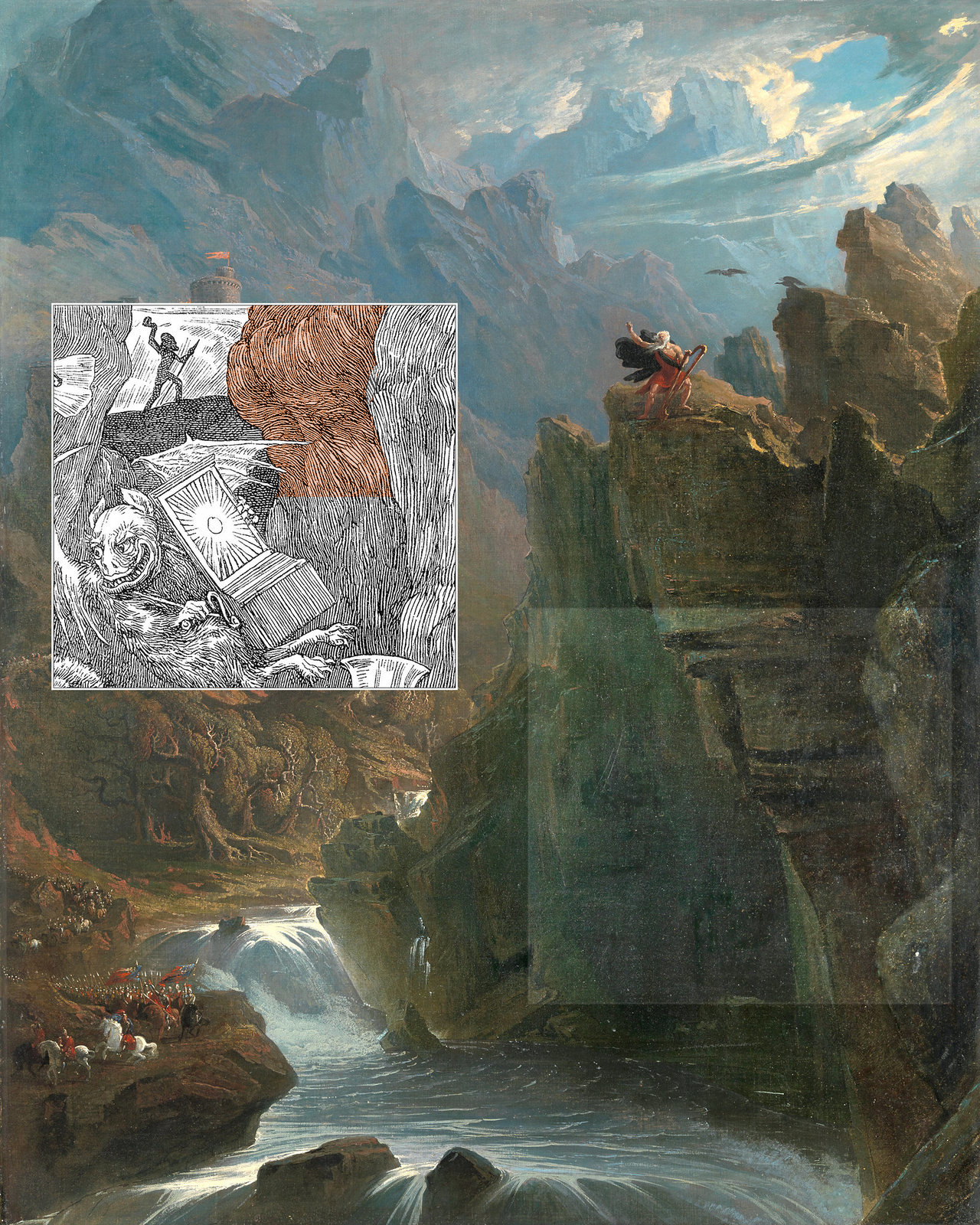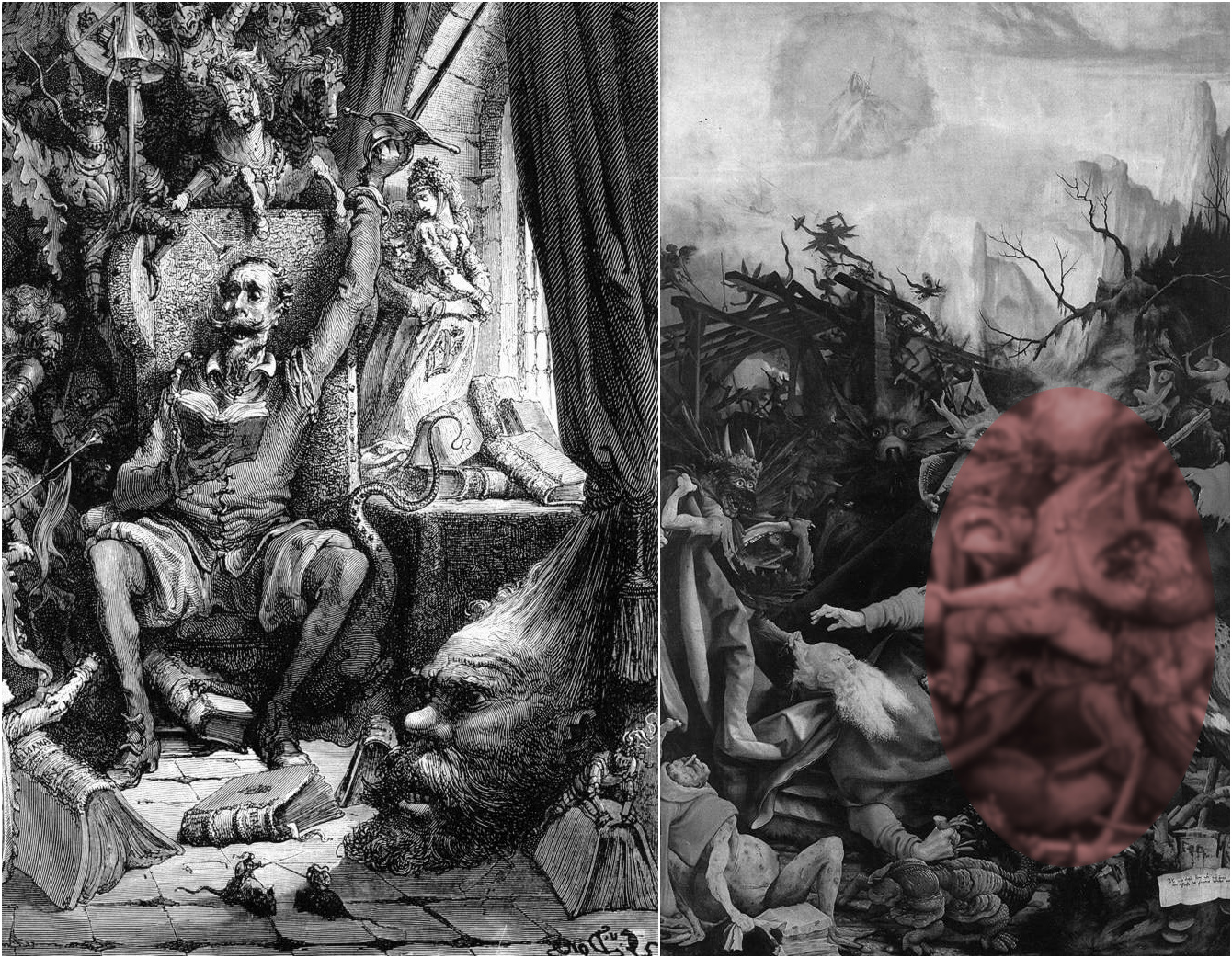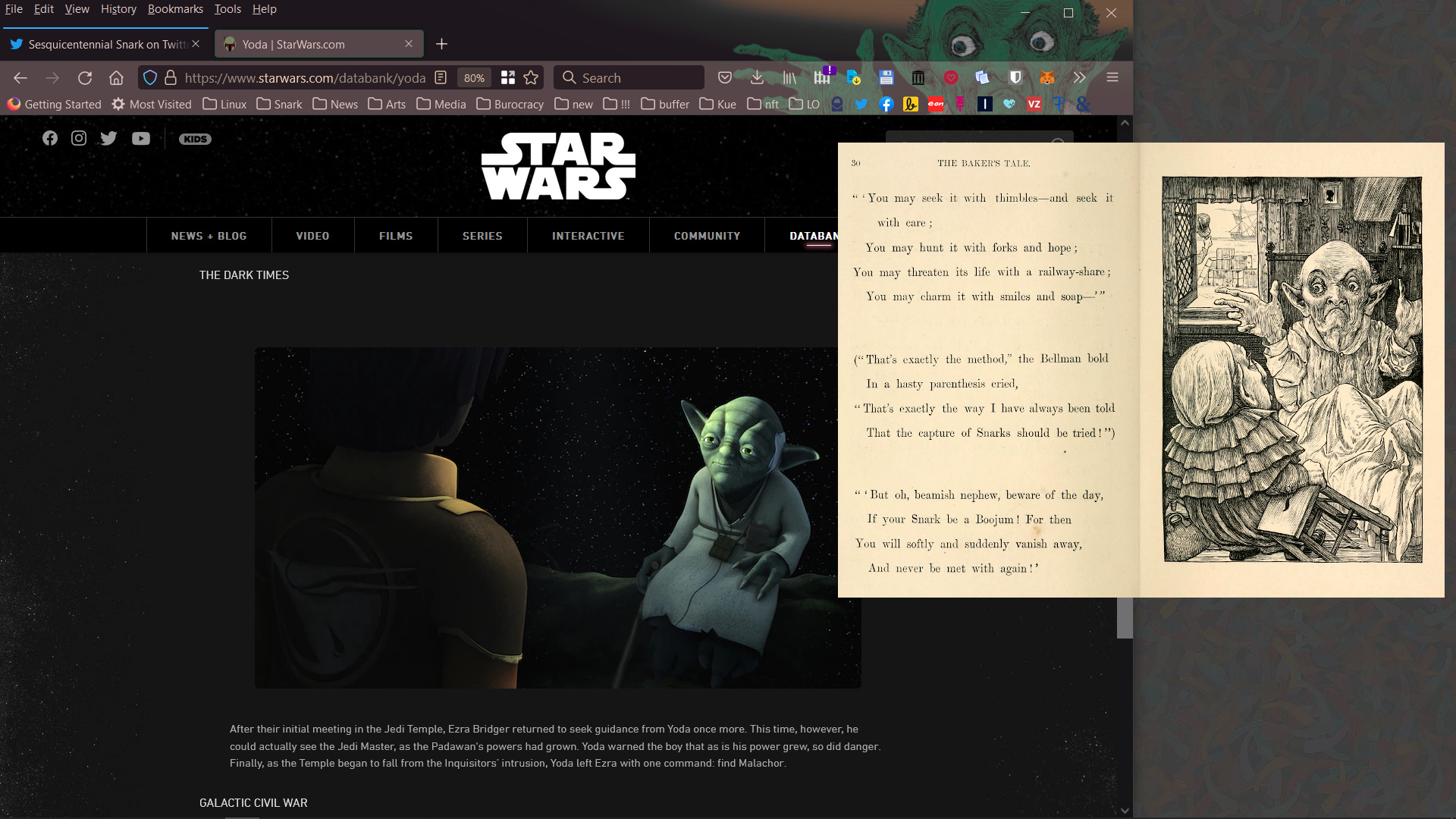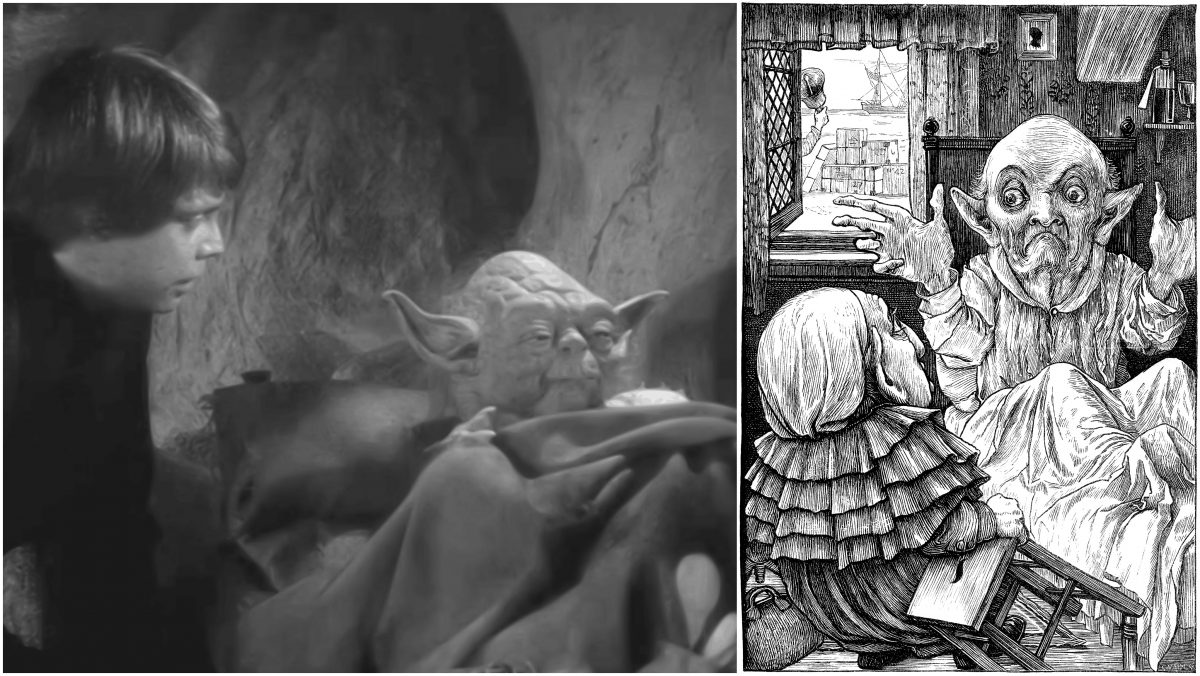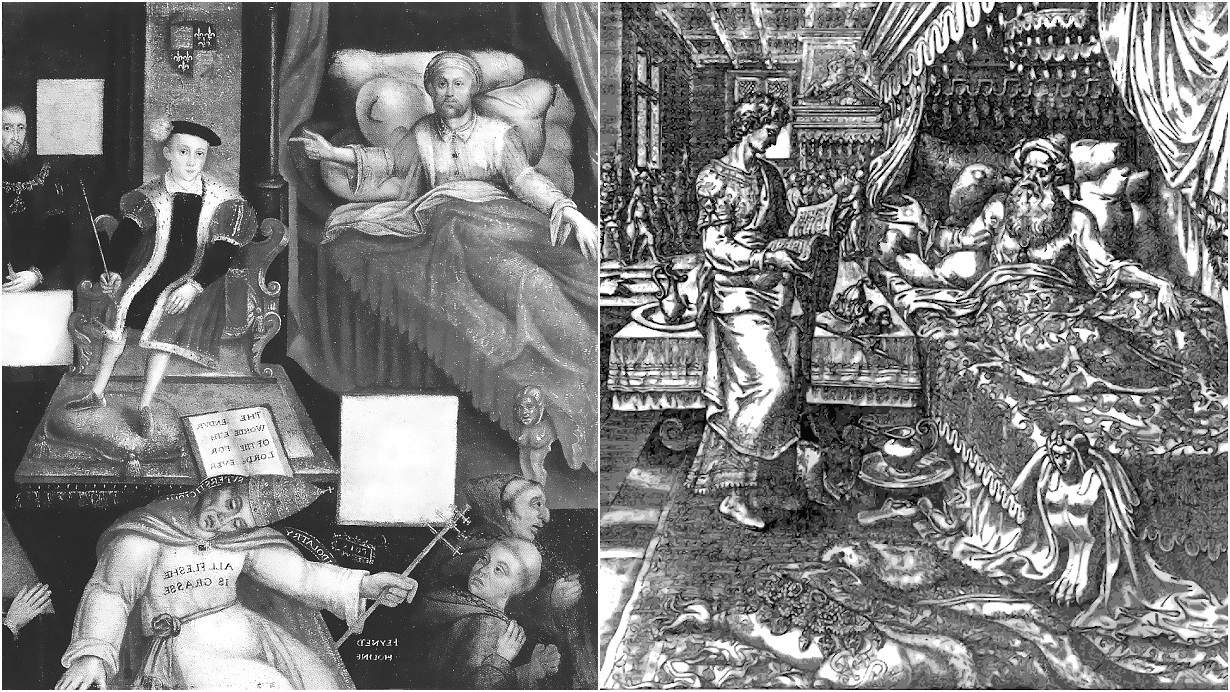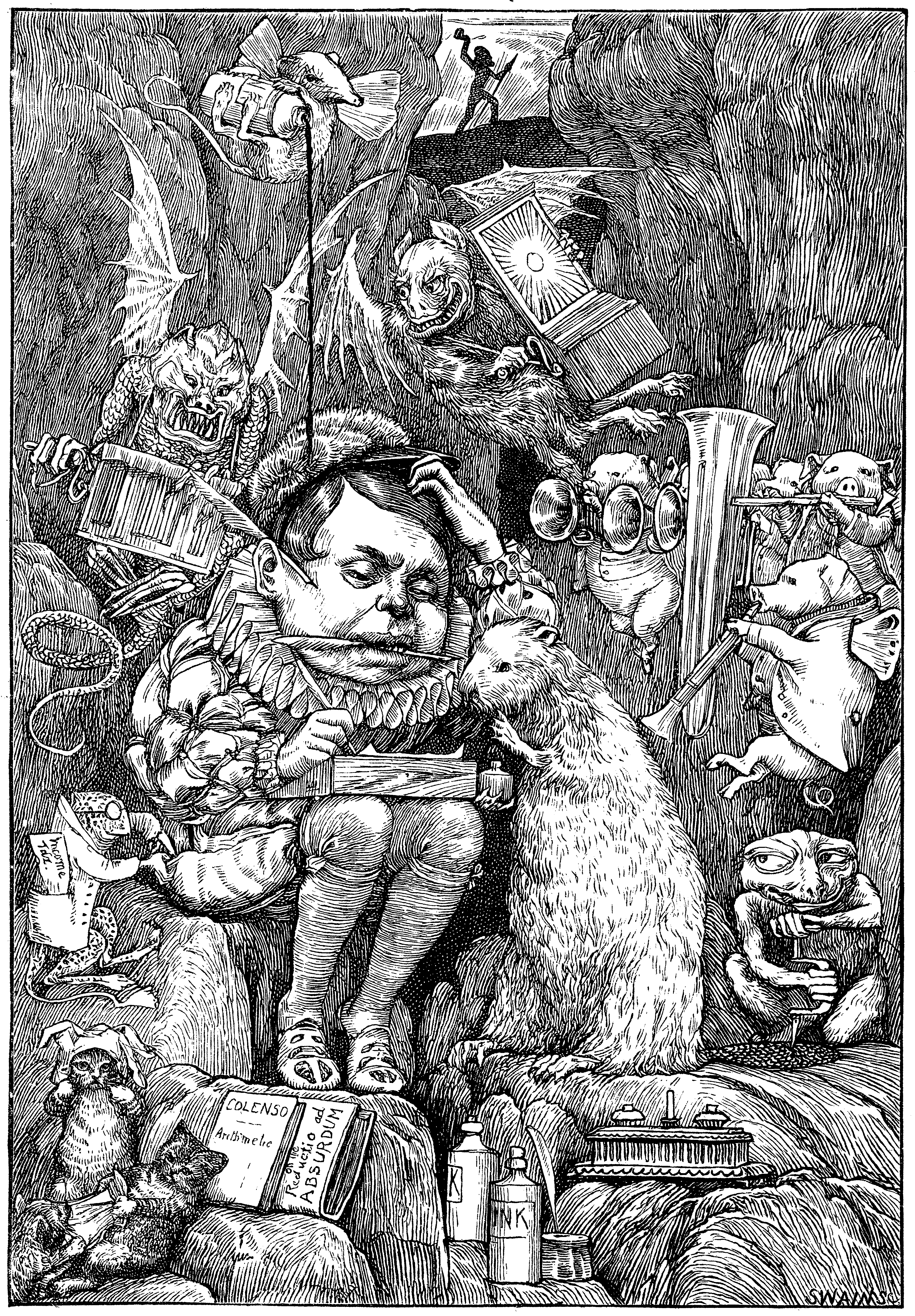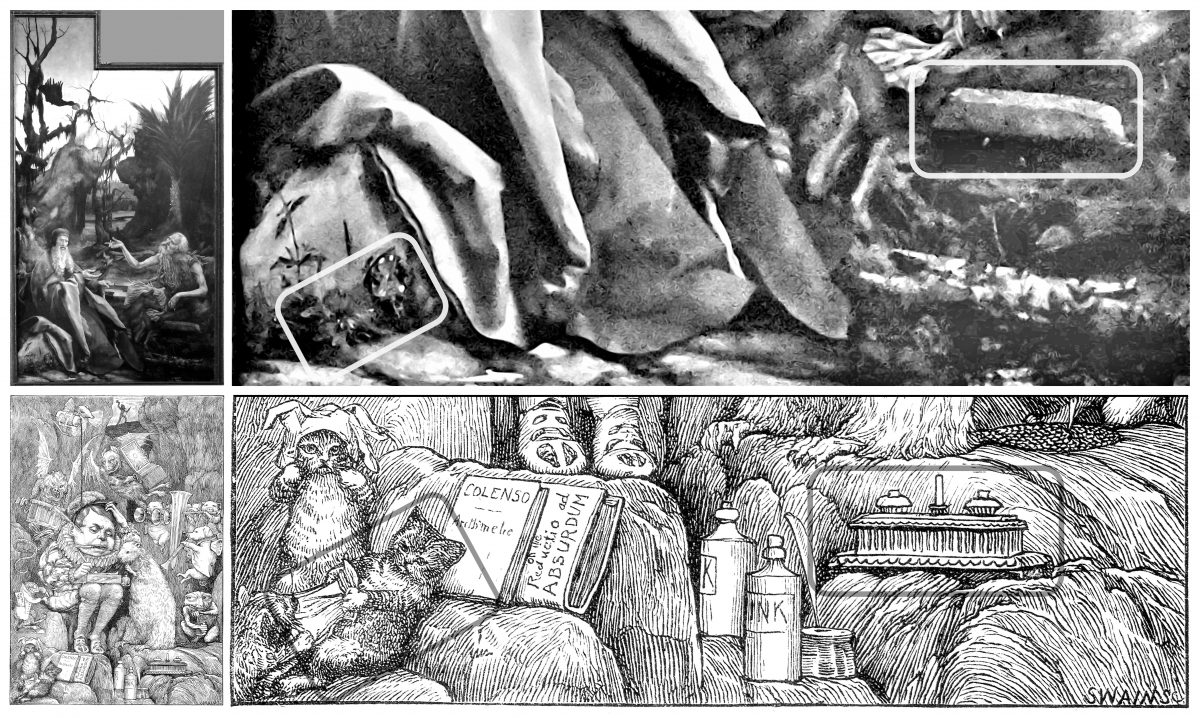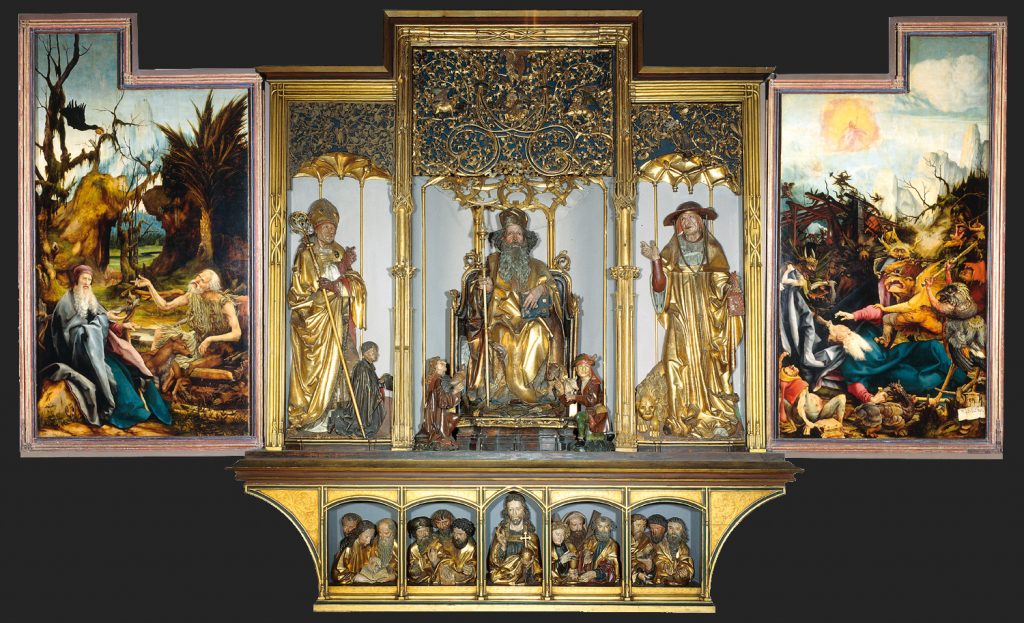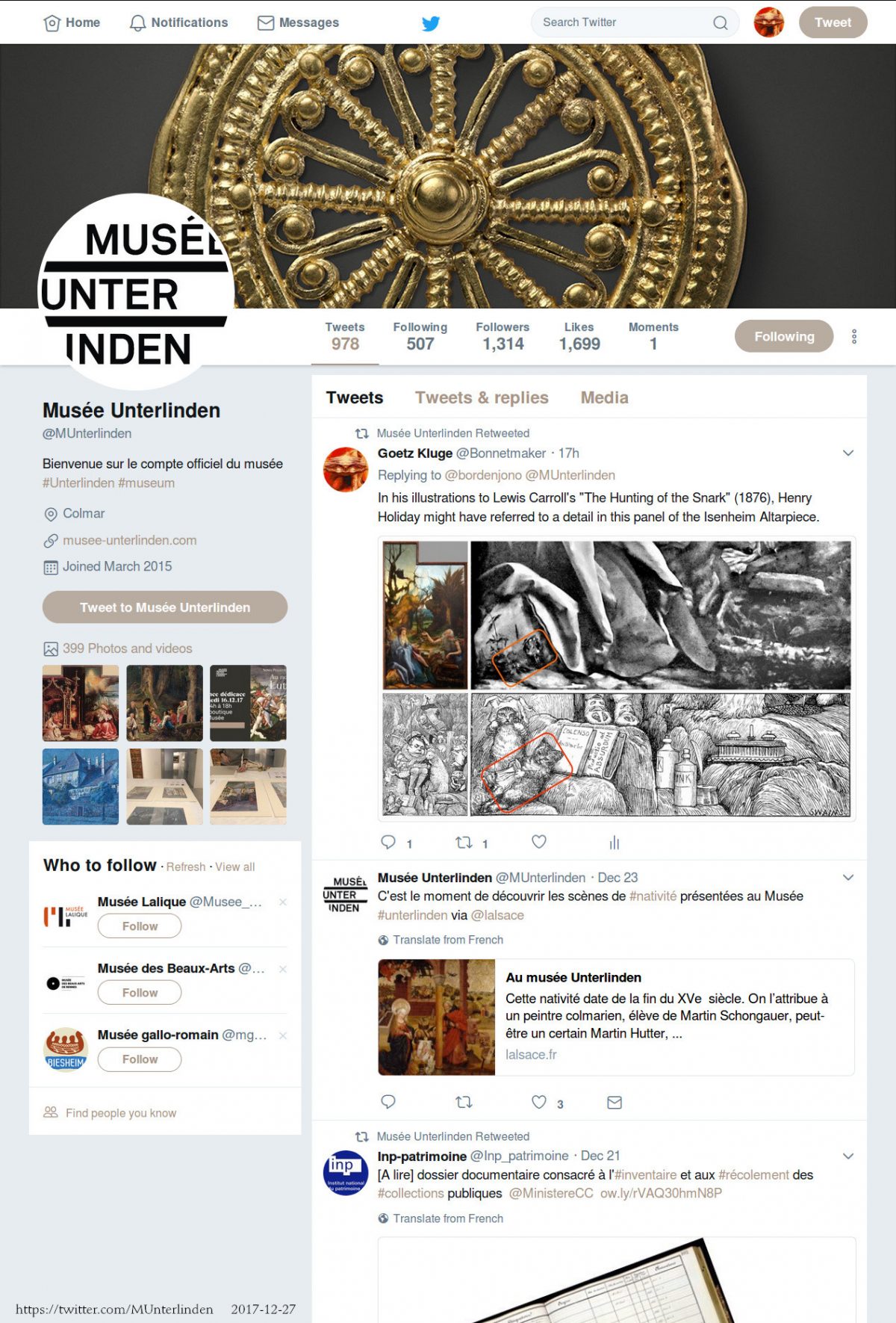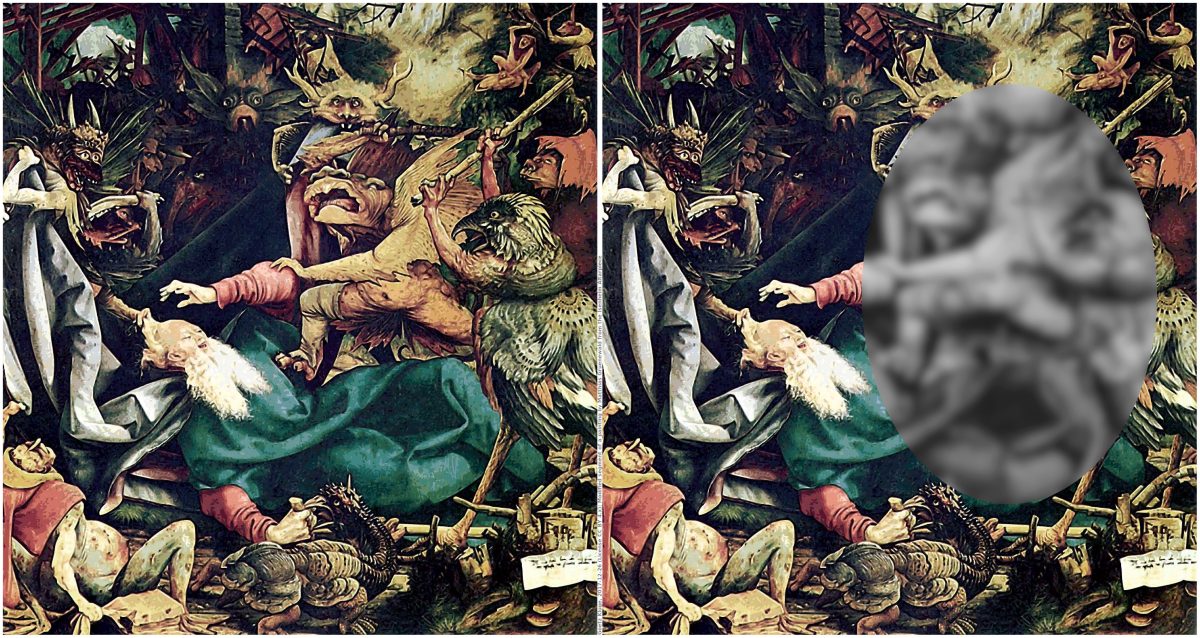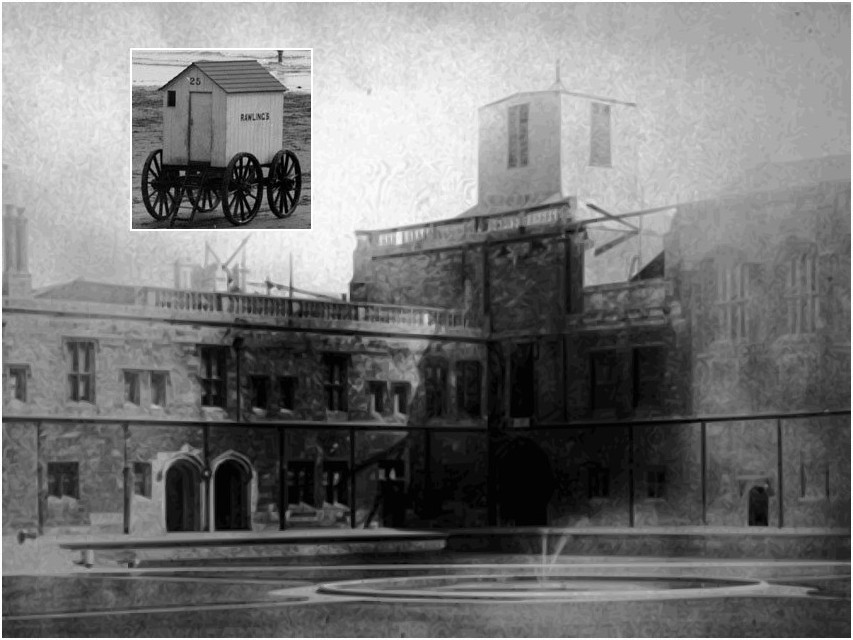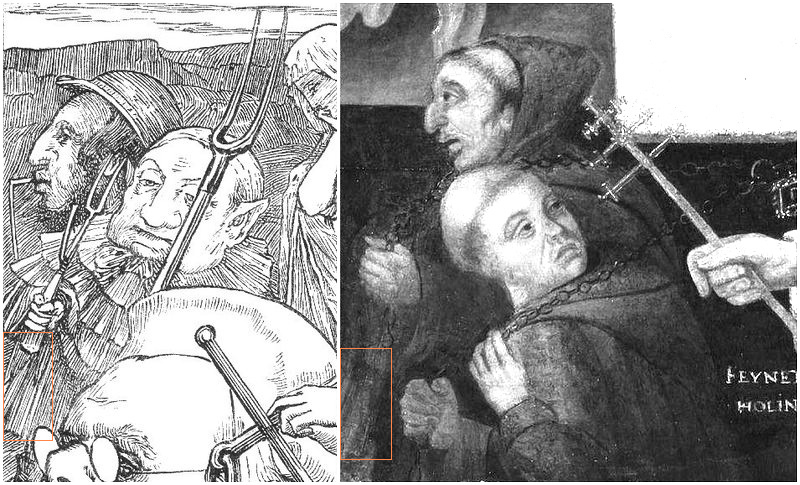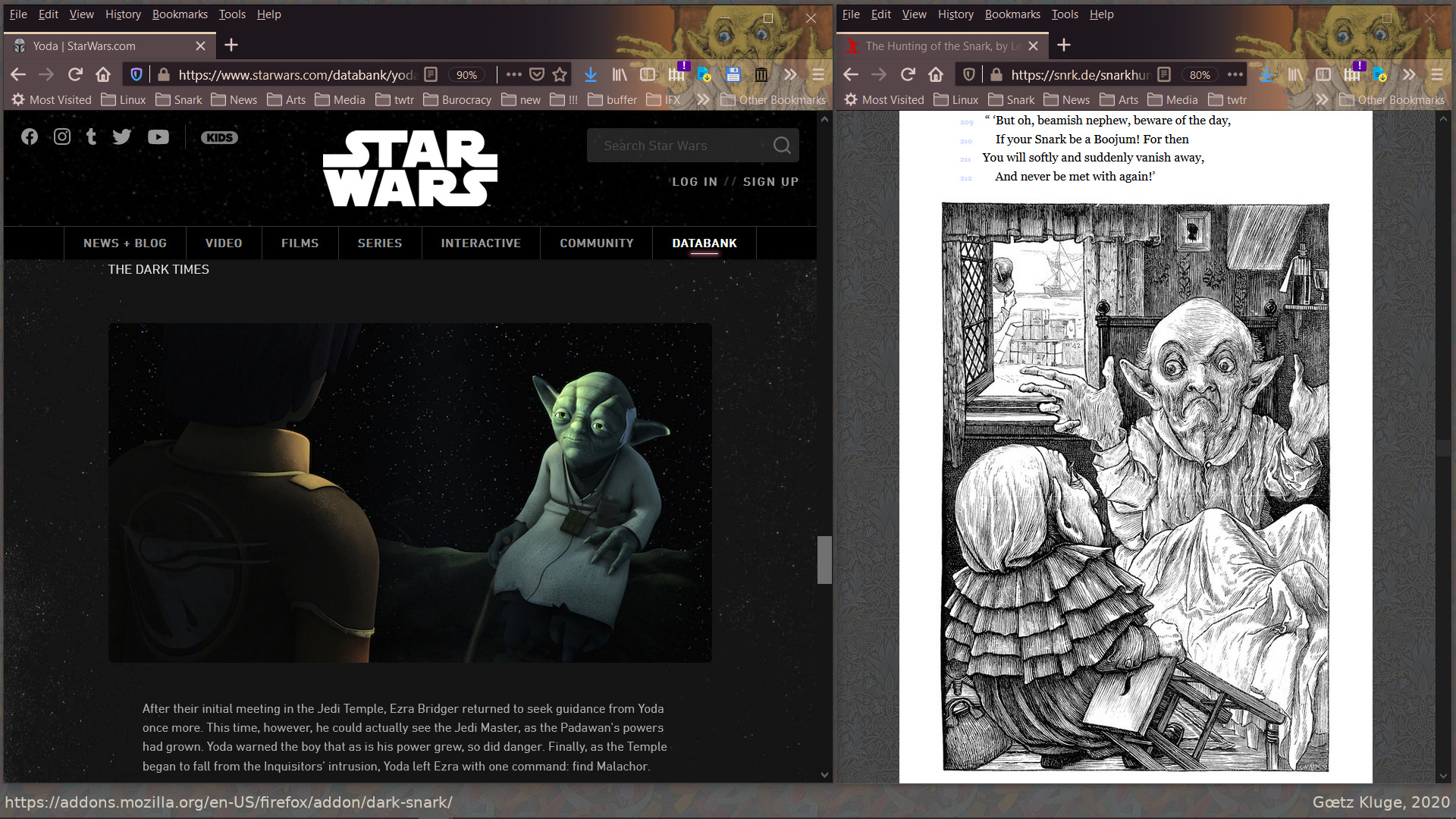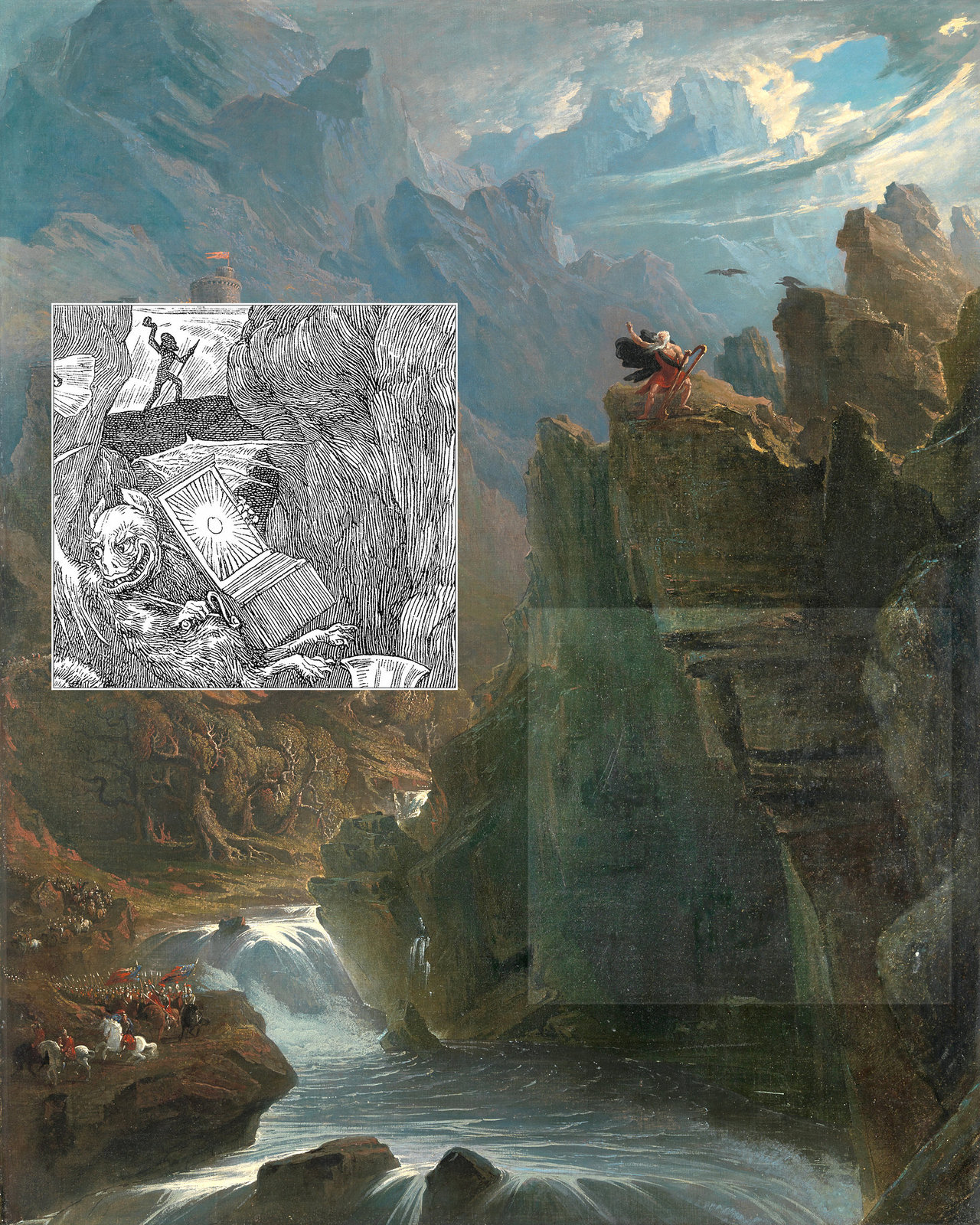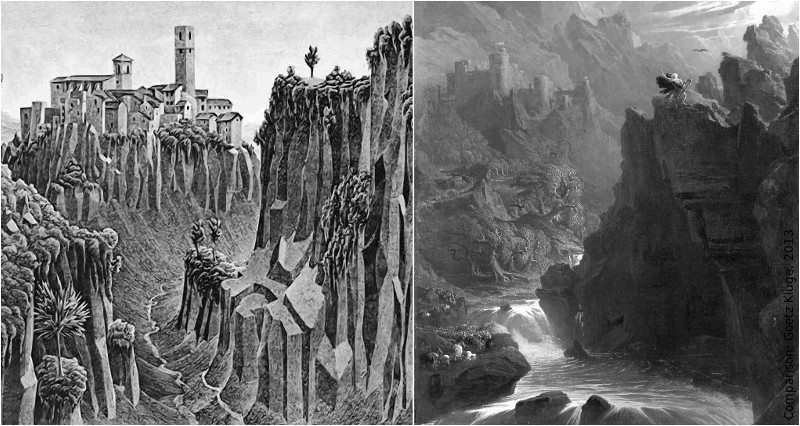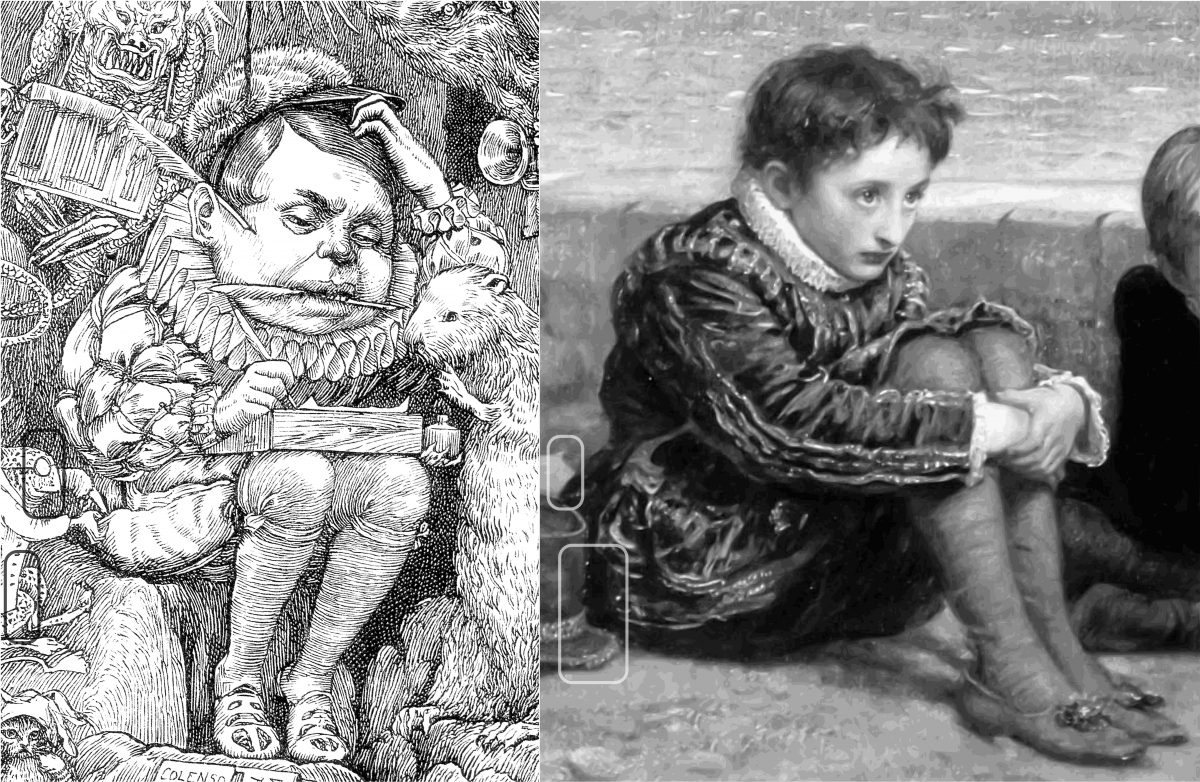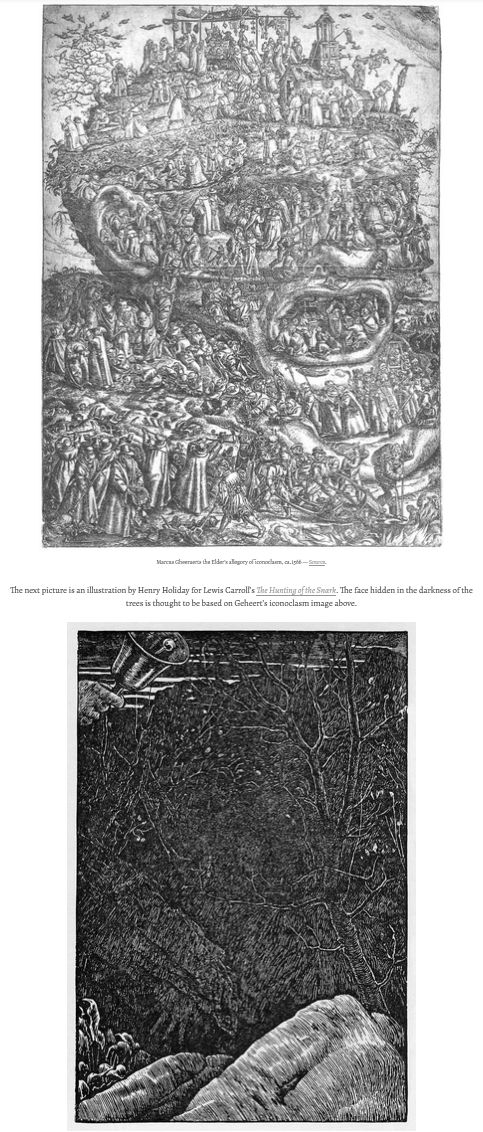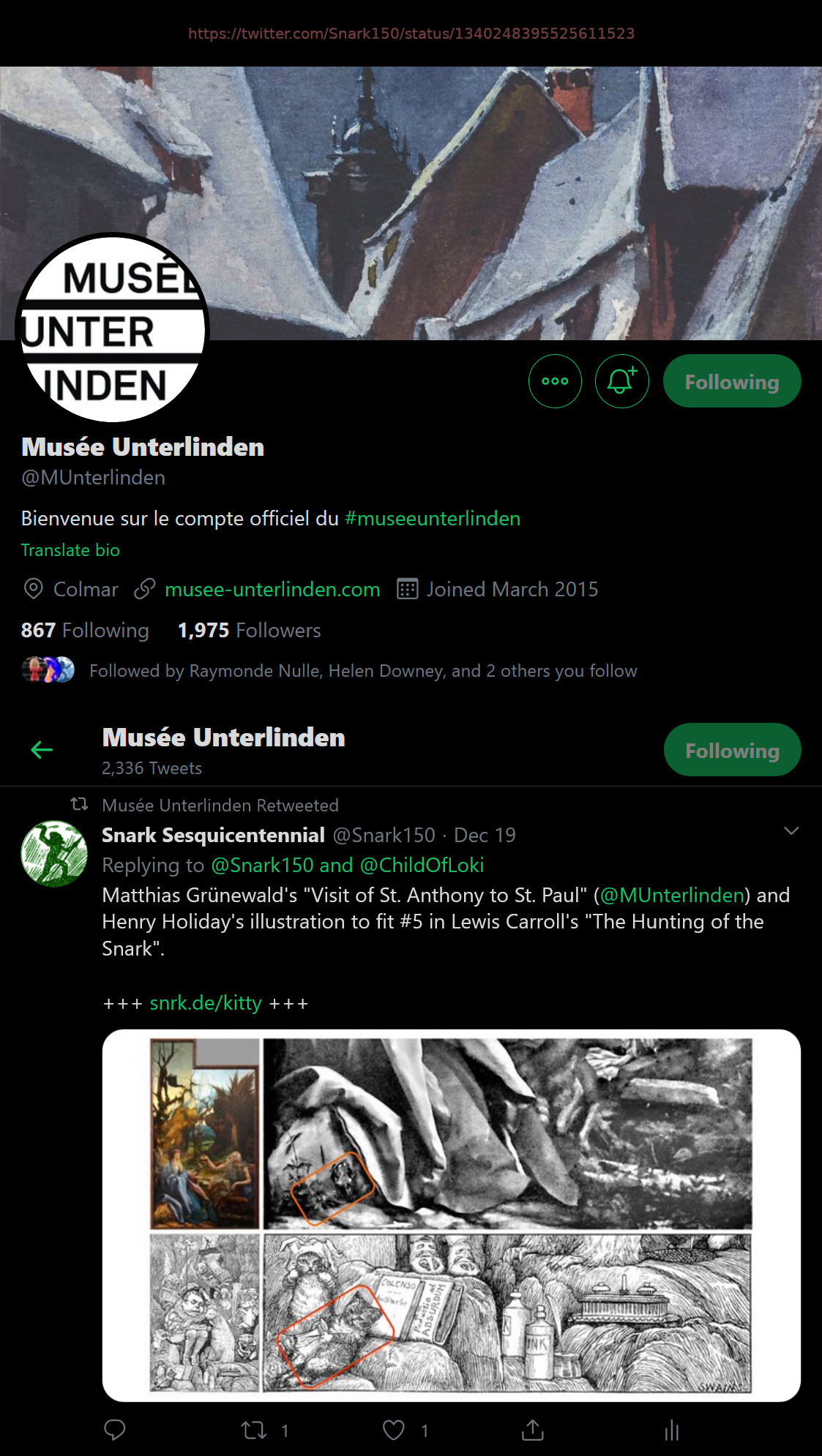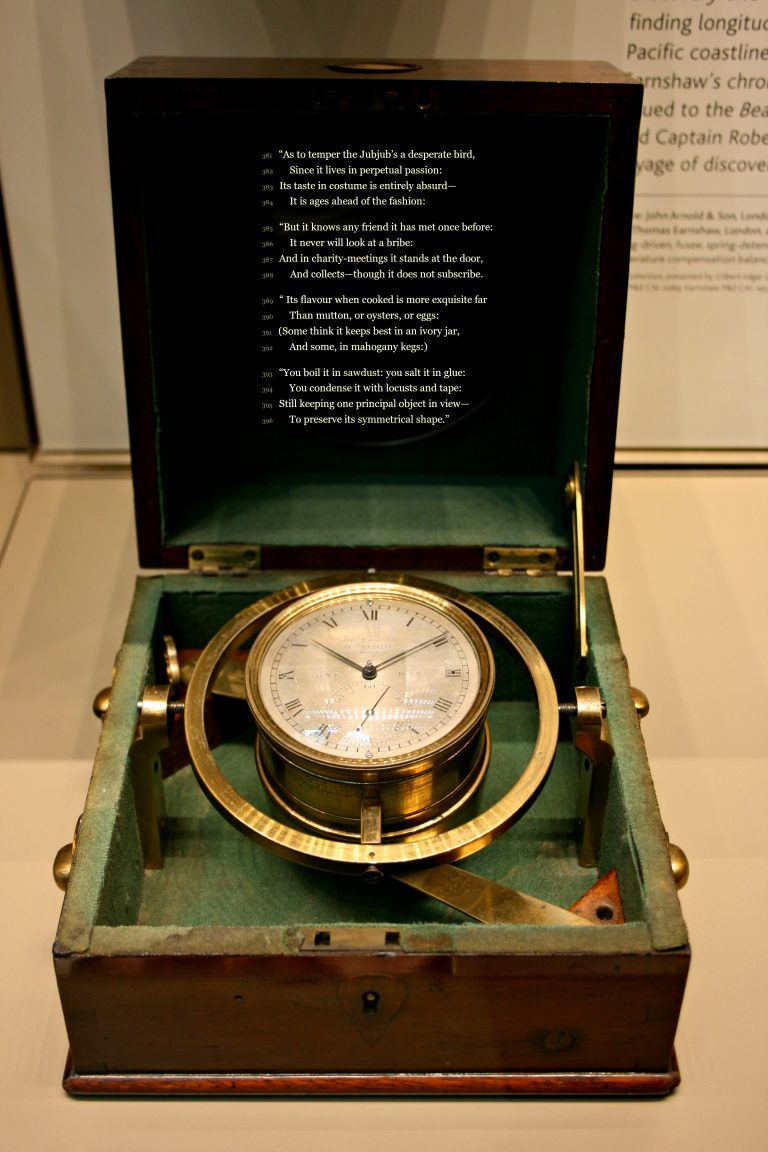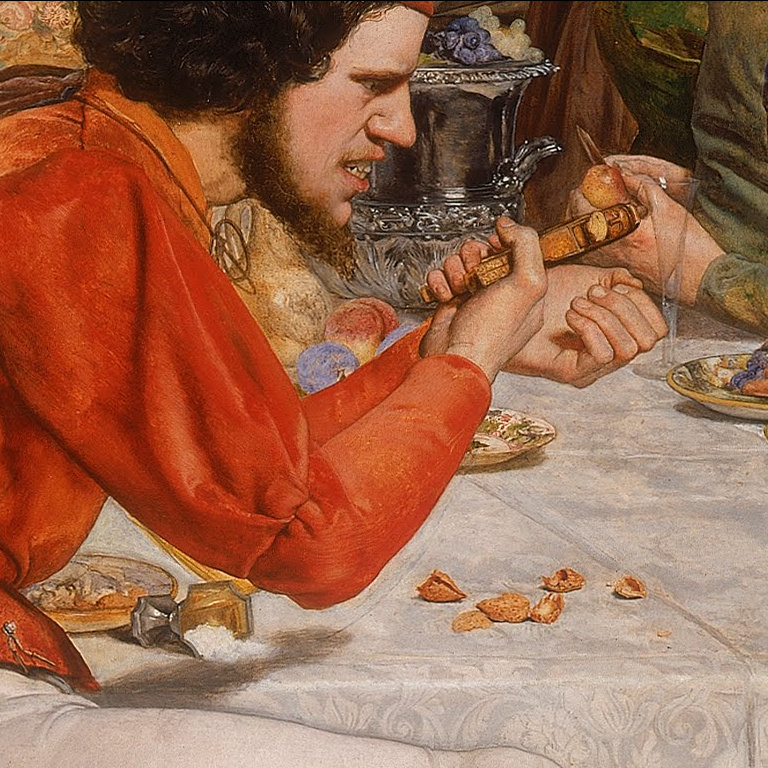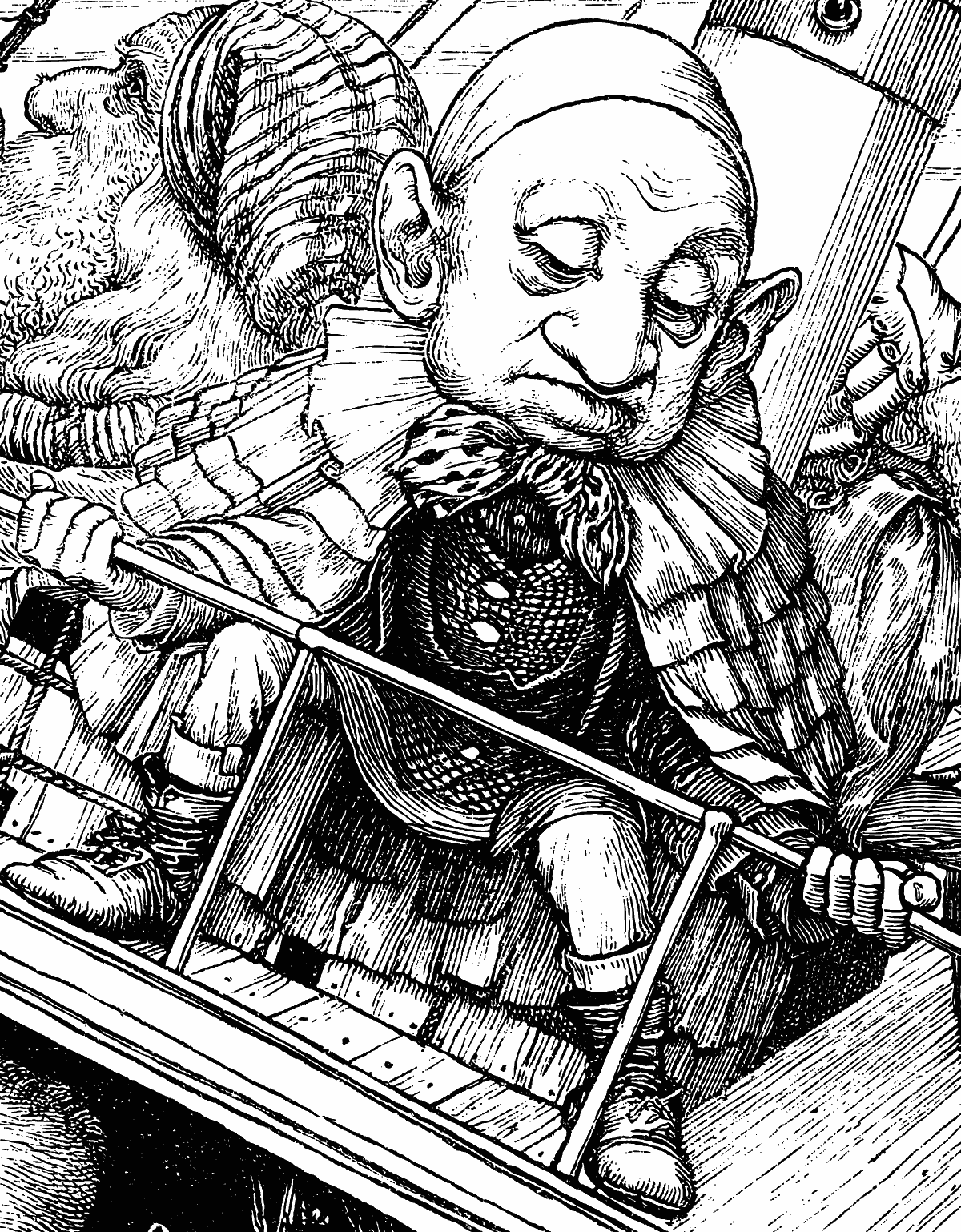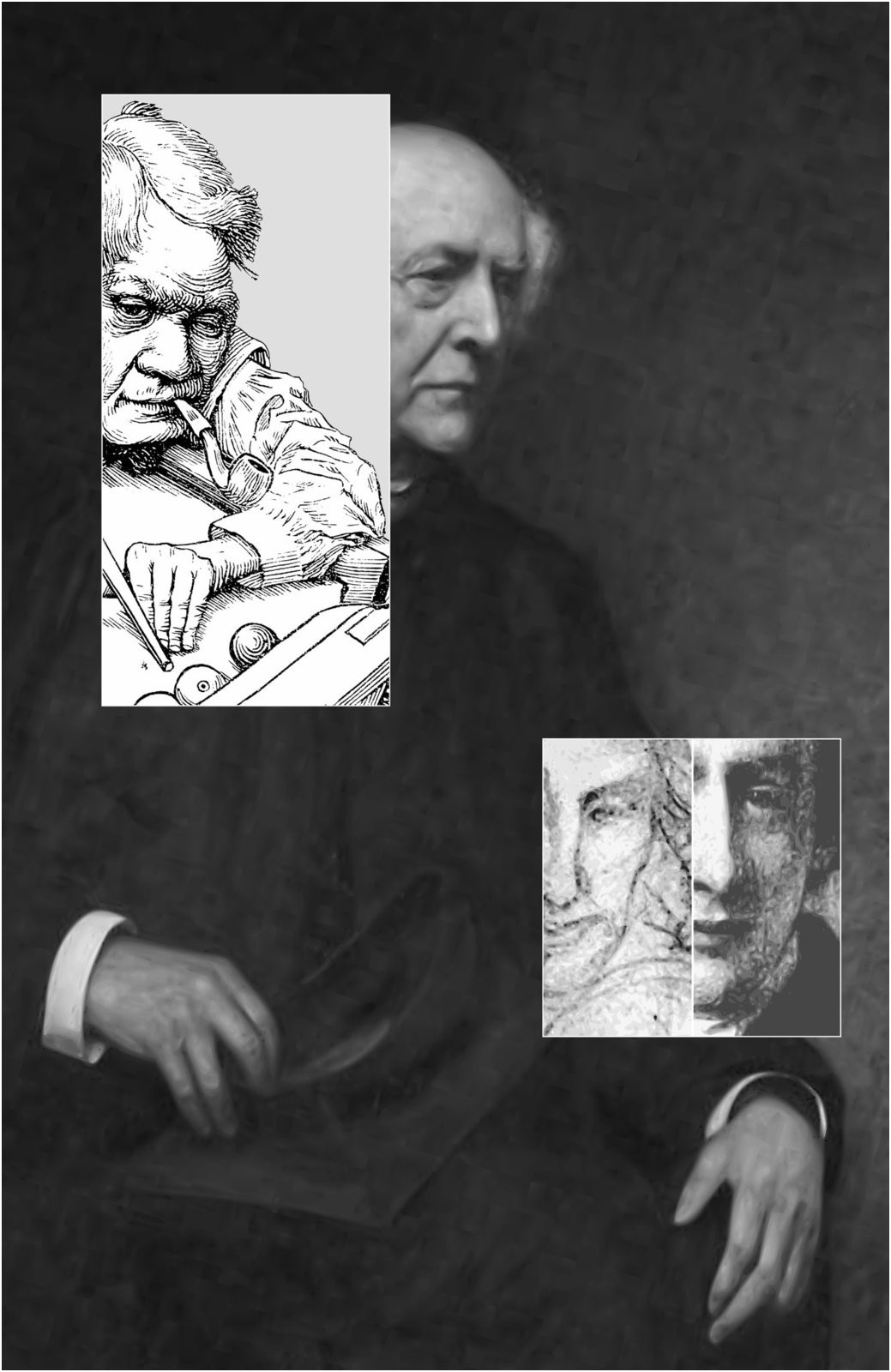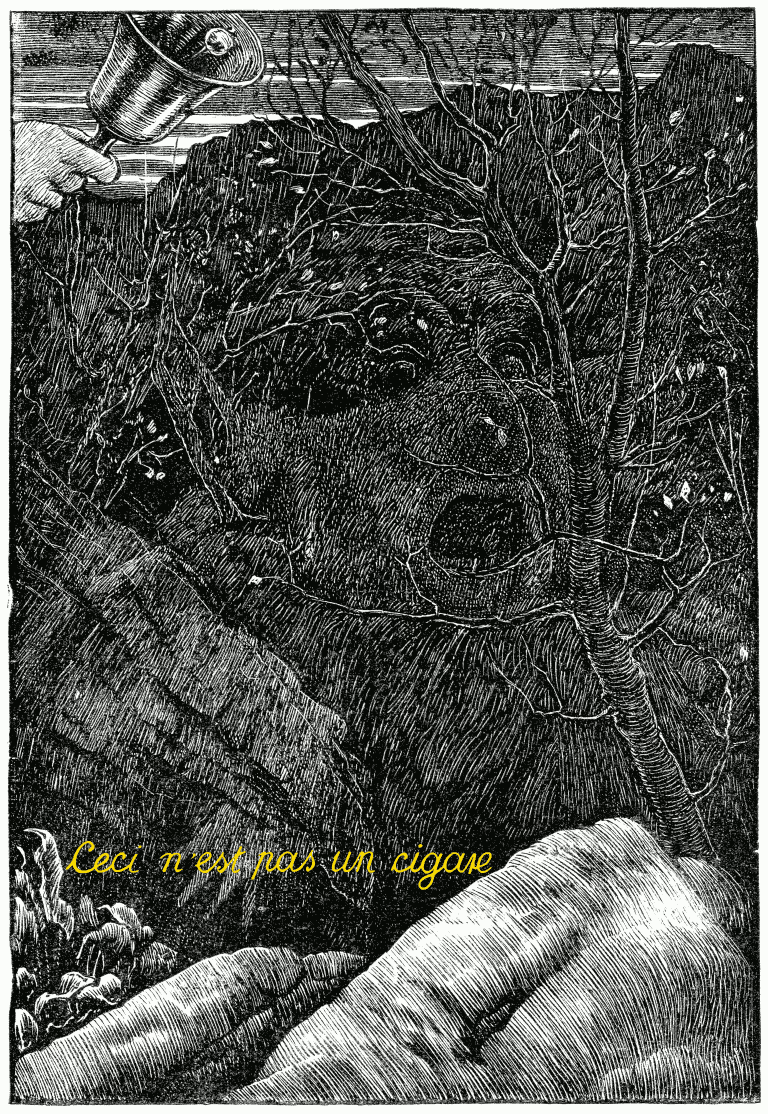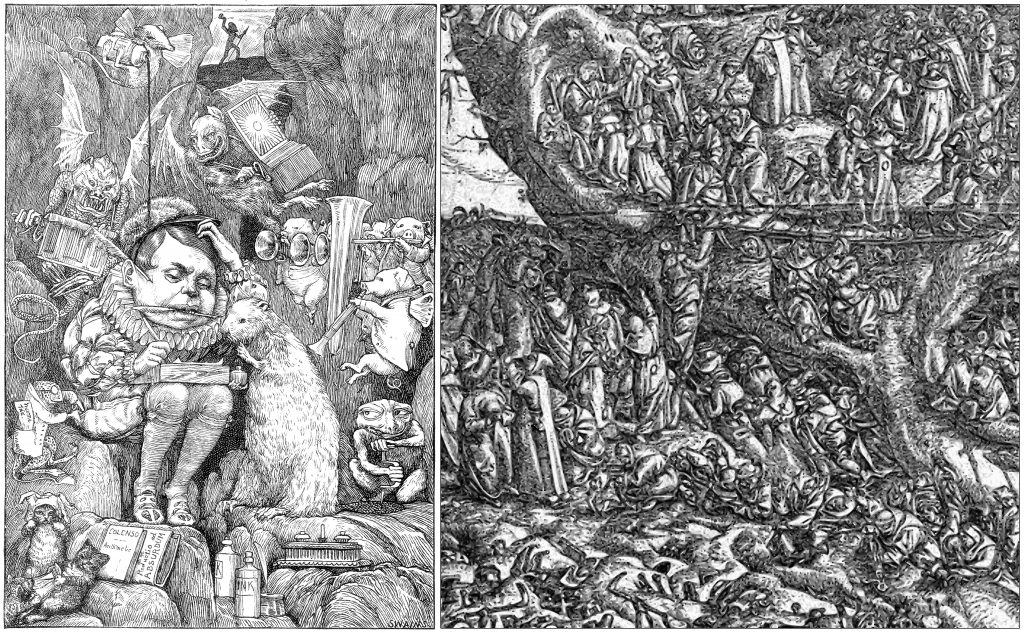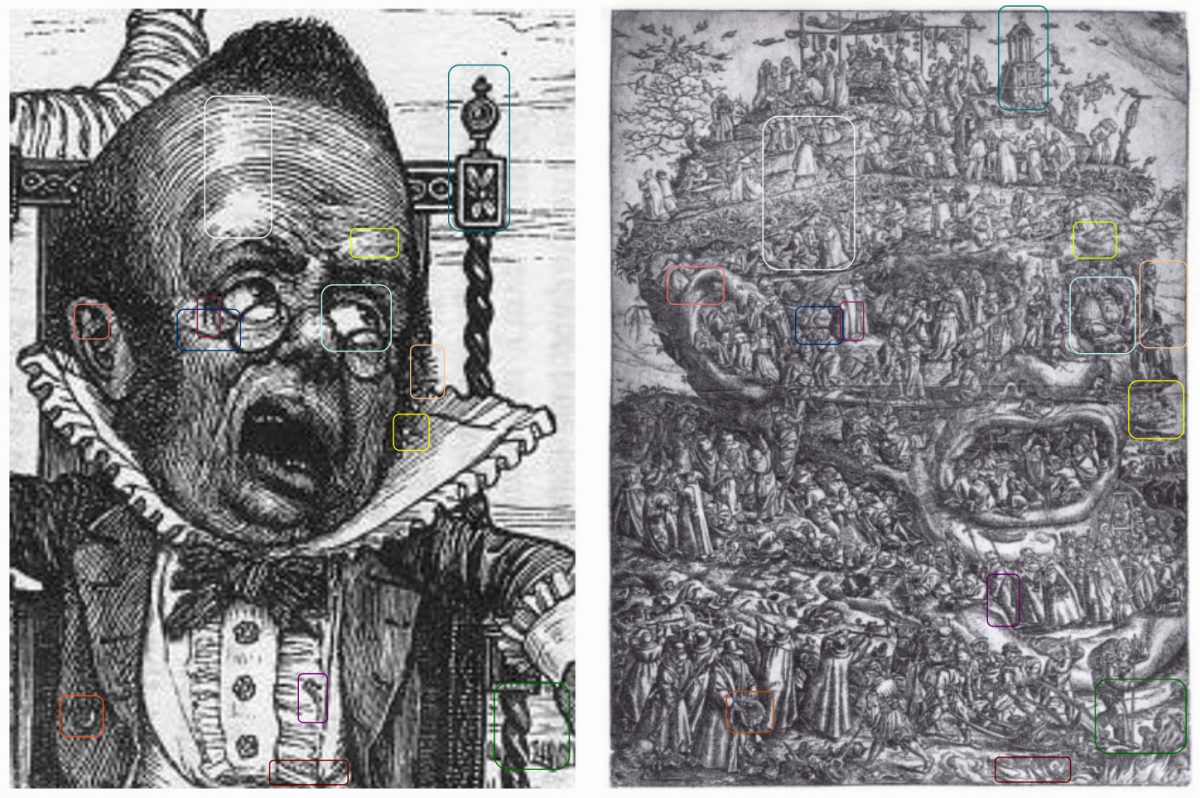There was an old man of Port Grigor,
Whose actions were noted for vigour;
He stood on his head
till his waistcoat turned red,
That eclectic old man of Port Grigor.
He was black in the face,
and they scarcely could trace
The least likeness to what he had been:
While so great was his fright
that his waistcoat turned white –
A wonderful thing to be seen!
Lewis Carroll, from “The Hunting of the Snark”, 1876
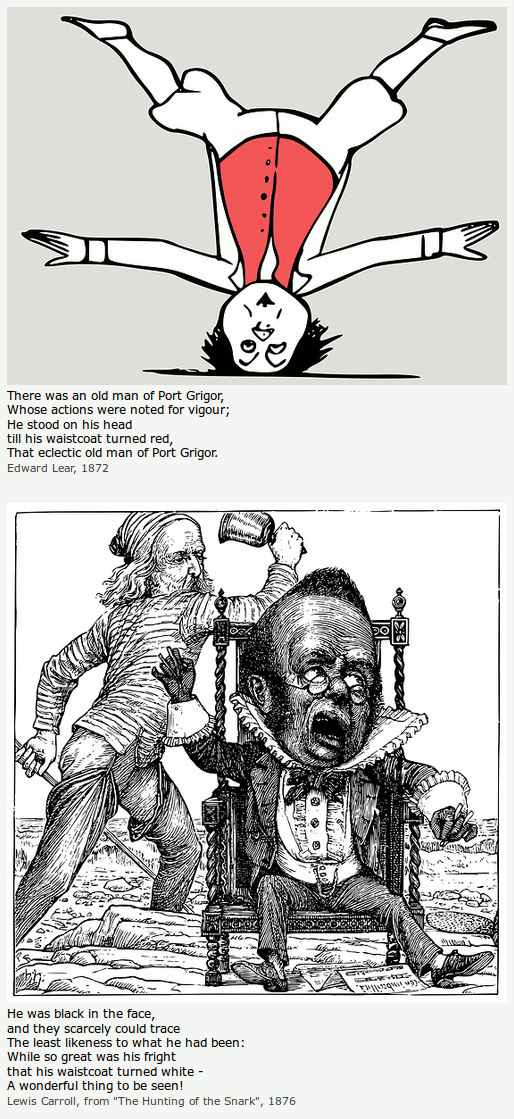 Martin Gardner annotated (MG058) to The Hunting of the Snark that Elizabeth Sewell pointed out in The Field of Nonsense (1952) that a line in Carroll’s poem has a similarity to a line in a limerick by Edward Lear.
Martin Gardner annotated (MG058) to The Hunting of the Snark that Elizabeth Sewell pointed out in The Field of Nonsense (1952) that a line in Carroll’s poem has a similarity to a line in a limerick by Edward Lear.
See also:
- Alex Dalenberg (2014-04-02): A Sense for Nonsense: From Edward Lear to Lewis Carroll to Dr. Seuss
- Louise Schweitzer (Louise Dumas), One Wild Flower, Ph.D. thesis, 2012 (Goodreads)
- Wikipedia
- … While so great was his fright …
- On Borrowing
- Bandersnatched Baker 6000×6000
In The Field of Nonsense (I use a 2015 reprint), Elizabeth Sewell compared Carroll’s waistcoat stanza and Lears’s waistcoat limerick while taking a safe distance to considering “mutual plagiarism” by stating that “there is no evidence that either man was familiar with the other’s work”, adding that “the likeness do not in any case suggest borrowings…” (p. 9). However, Carroll/Dodgson knew Lear’s work (Marco Graziosi), and borrowing isn’t necessarily evil.
2017-09-11, update: 2022-10-24

